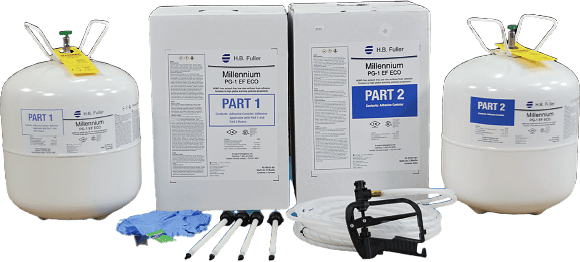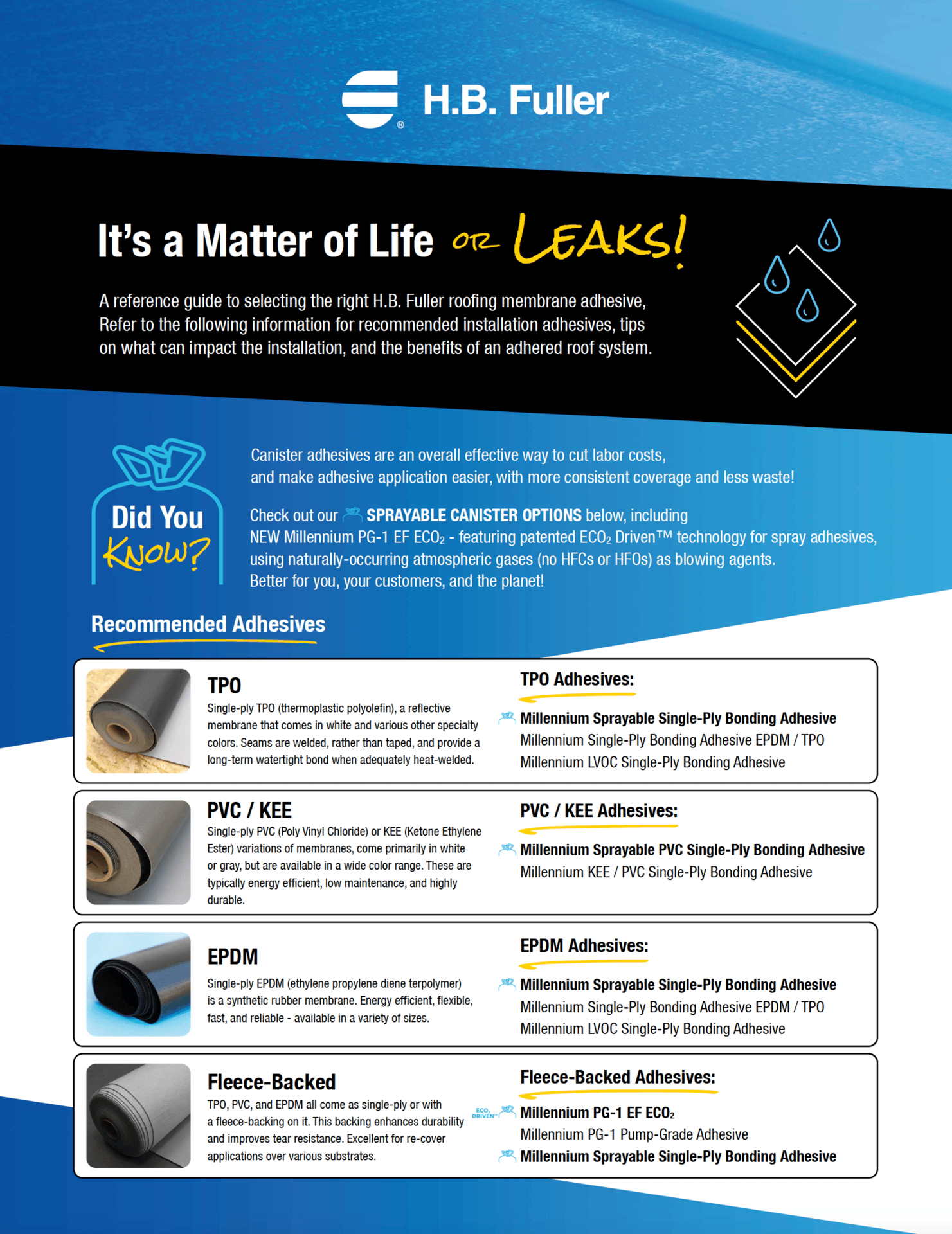The final step of any roofing job: the roofing membrane, the barrier between the elements and all your hard work underneath. It is important to have the adhesive information you need for the material specified for the job.
The membrane type is a key factor to consider when selecting your adhesive — it can be the difference between a perfect installation and a small problem that develops into many problems.
Use our quick reference guide and general tips below to determine what factors to consider for your membrane bonding solutions.



Innovation for Tomorrow’s Roofing

Look for the ECO2 Driven logo to be certain you’re using this new technology.* PATENT NUMBER US 11,999,556
Introducing NEW Millennium PG-1 EF ECO2 – featuring patented* ECO2 Driven technology for spray adhesives. Using naturally occurring atmospheric gases (no HFCs or HFOs) as the blowing agent, this high-performance adhesive is perfect for insulation board and fleece-backed membranes. Better for you, your customers, and the planet!
Canister adhesives are an overall effective way to cut labor costs, and make adhesive application easier, with more consistent coverage and less waste! Check out all our SPRAYABLE OPTIONS shown in bold below:
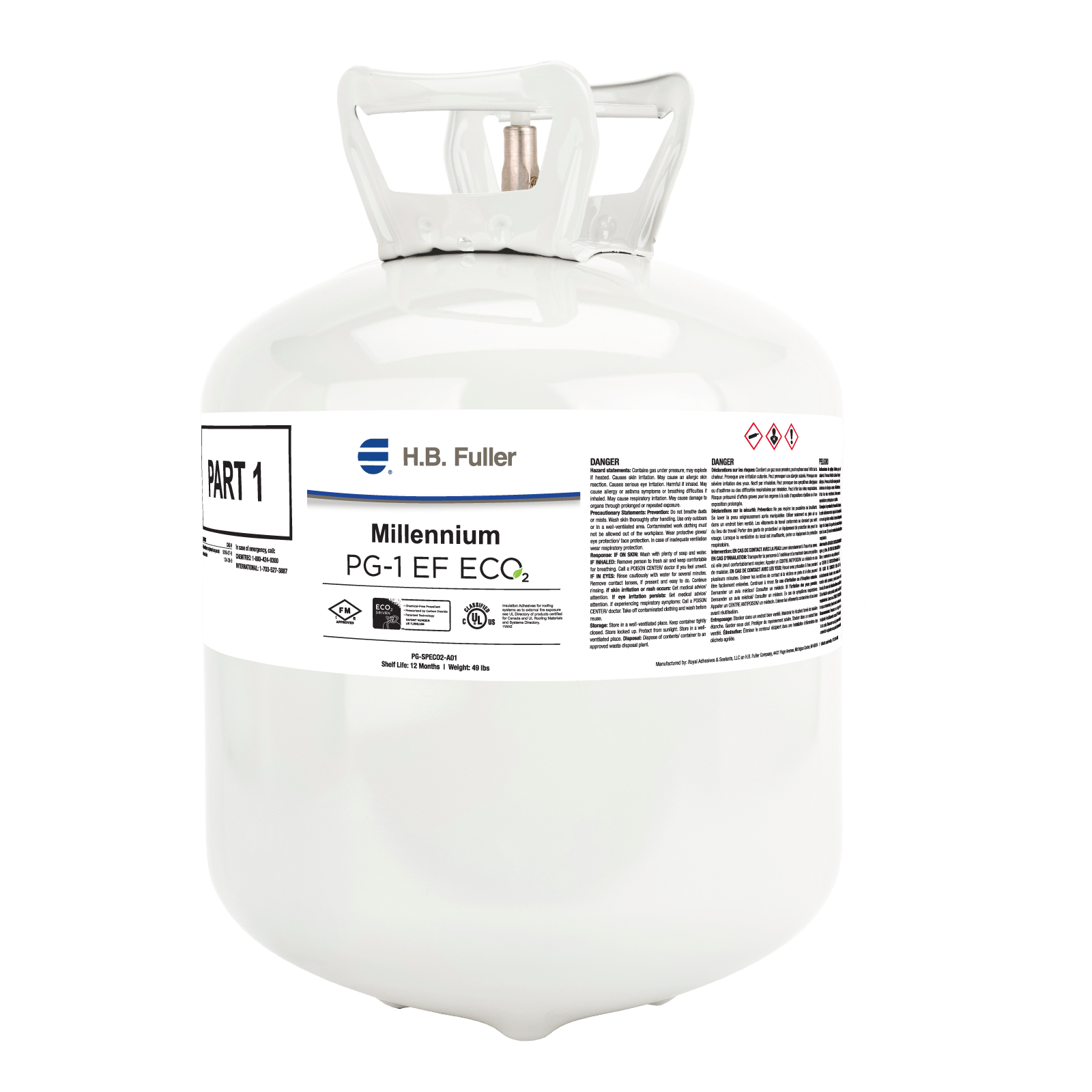
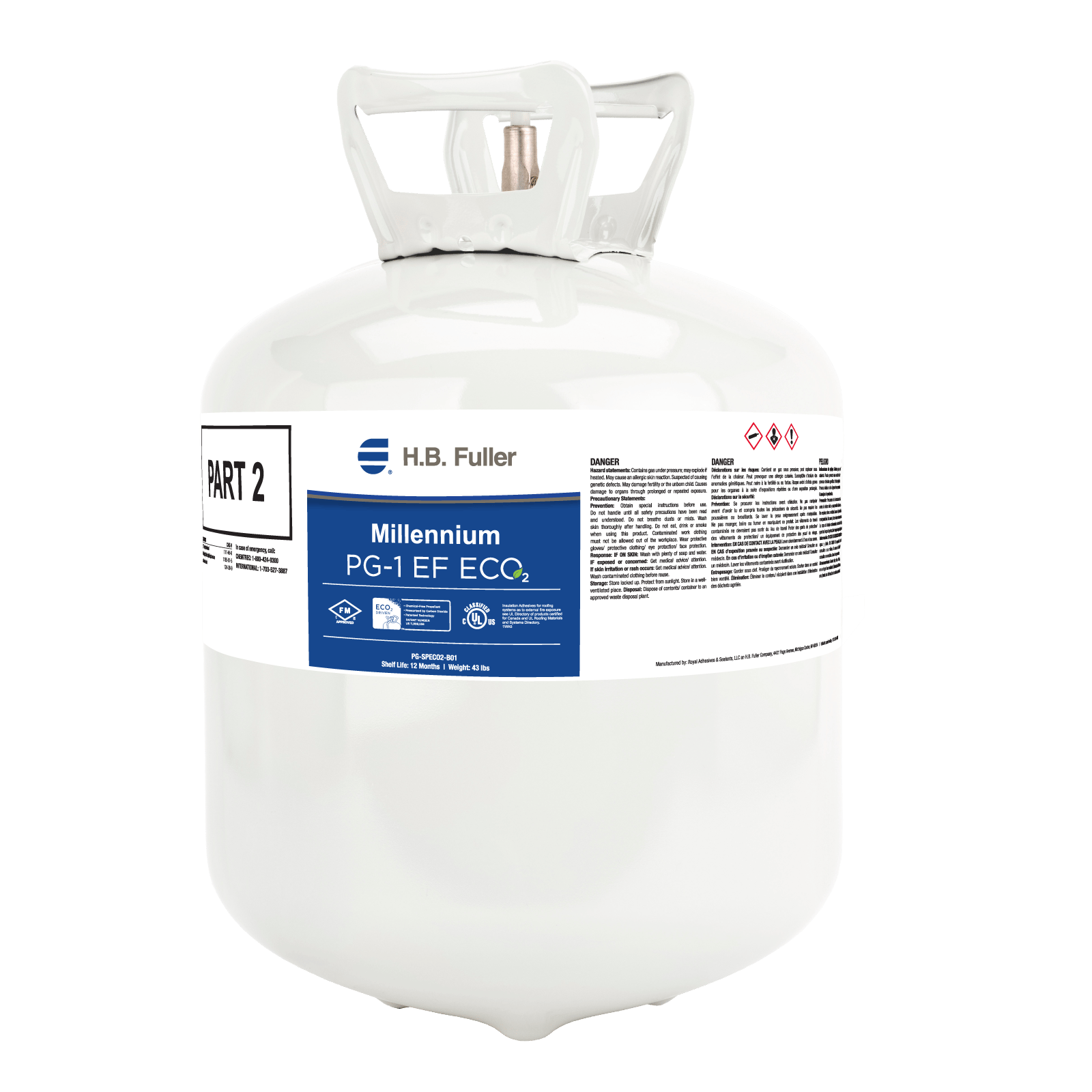

Canister adhesives are an overall effective way to cut labor costs, and make adhesive application easier, with more consistent coverage and less waste!Check out all our SPRAYABLE OPTIONS below:
Fleece-Backed Membranes
Special Properties
- Enhances durability
- Improves tear resistance
Adhesive Recommendation
- Millennium PG-1 Pump-Grade Adhesive
- Millennium Sprayable Single-Ply Bonding Adhesive
Application Method
- One-way stick – Apply adhesive to either roof deck or insulation layer
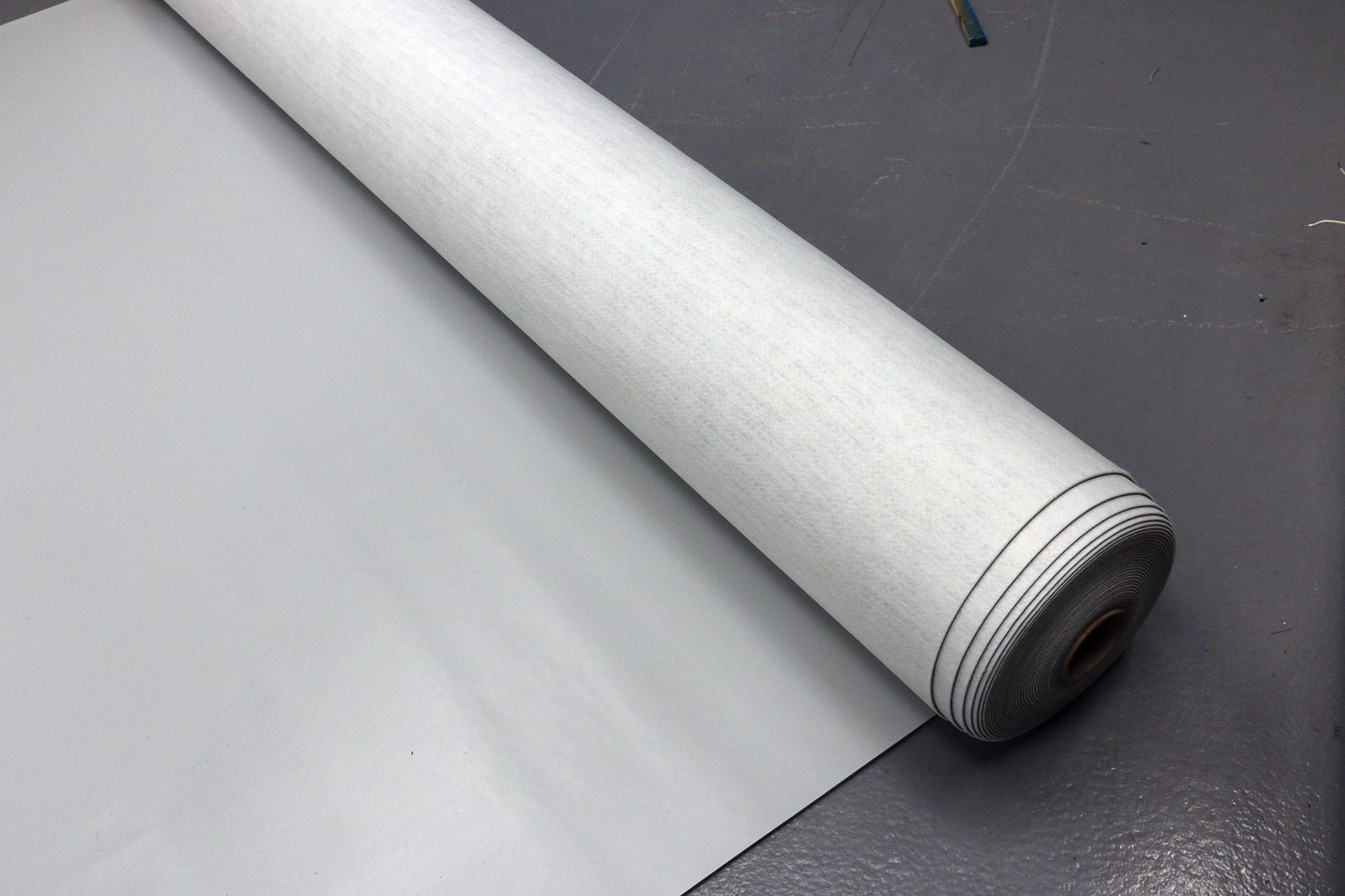
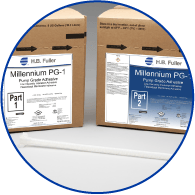
DOWNLOAD TDS
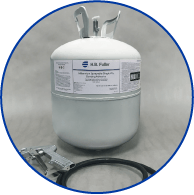
DOWNLOAD TDS
Roofing Membranes and the Adhesives That Keep Them in Place

TPO
TPO
PVC
PVC
EPDM
EPDM
FLEECE-BACKED
FLEECE-BACKED
TPO
H.B. Fuller ADHESIVE RECOMMENDATIONS
- Millennium Single-Ply Bonding Adhesive EPDM TPO
- Millennium Sprayable Single-Ply Bonding Adhesive
- Millennium LVOC Single-Ply Bonding Adhesive
Application Method
- Contact adhesive: apply to both membrane and substrate
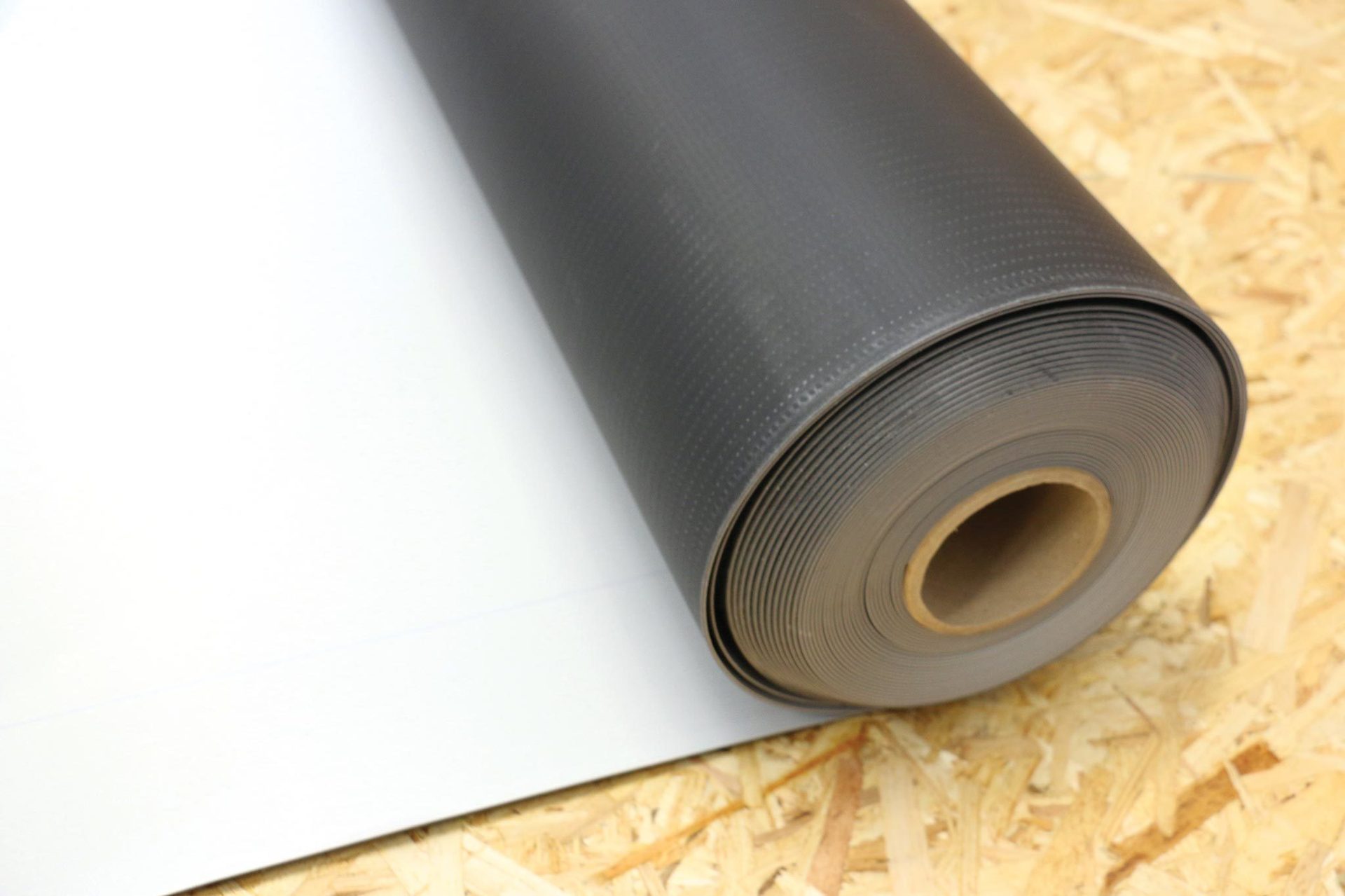
- TPO (thermoplastic polyolefin)
- Single-ply membrane
- Reflective membrane that comes in white and various other specialty colors
- Seams are welded, rather than taped, and provide a long-term watertight bond when adequately heat-welded.
PVC
H.B. Fuller ADHESIVE RECOMMENDATIONS
- Millennium Sprayable PVC Single-Ply Bonding Adhesive
- Millennium KEE/PVC Single-Ply Bonding Adhesive
Application Method
- Contact adhesive: apply to both membrane and substrate
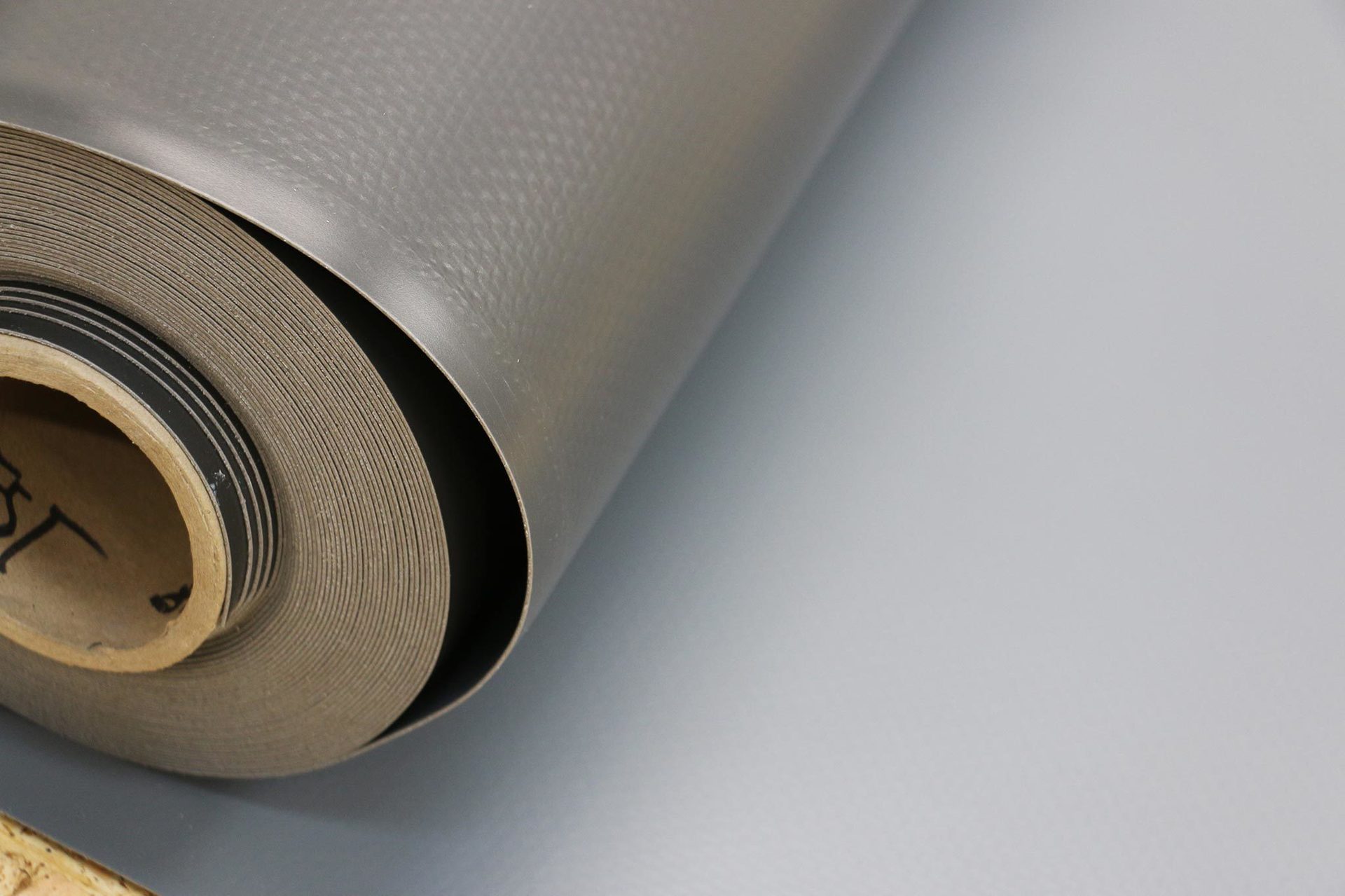
- PVC (Poly Vinyl Chloride) or KEE (Ketone Ethylene Ester) variations
- Single-ply membrane
- Comes primarily in white or gray, but available in a wide color range
- Energy efficient, low maintenance, and highly durable
EPDM
H.B. Fuller ADHESIVE RECOMMENDATIONS
- Millennium Single-Ply Bonding Adhesive EPDM TPO
- Millennium LVOC Single-Ply Bonding Adhesive
- Millennium Sprayable Single-Ply Bonding Adhesive
Application Method
- Contact adhesive: apply to both membrane and substrate
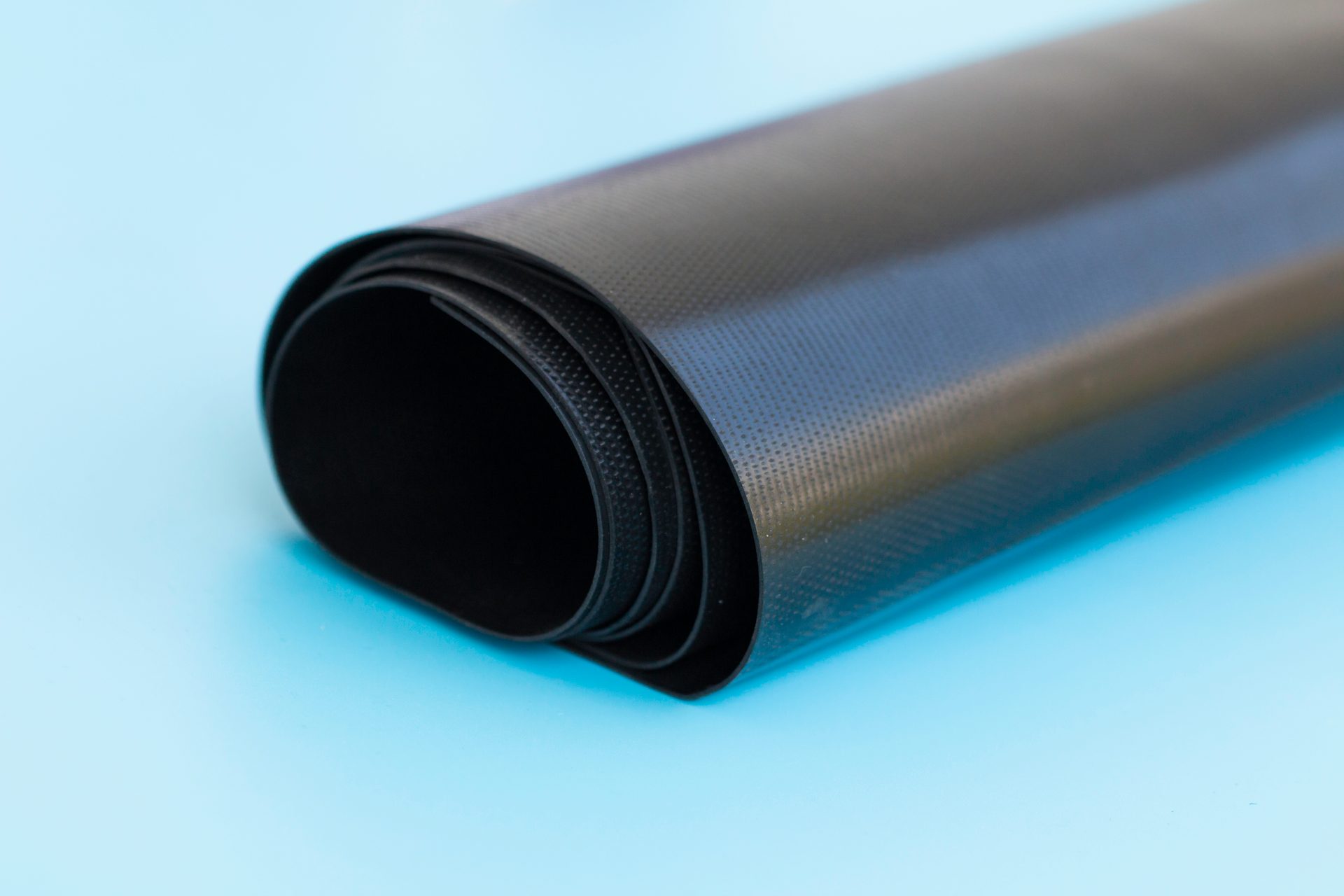
- EPDM (ethylene propylene diene terpolymer)
- Single-ply synthetic rubber membrane
- Energy efficient, flexible, fast, and reliable
- Available in a variety of sizes
Fleece-Backed Membranes
H.B. Fuller ADHESIVE RECOMMENDATIONS
- Millennium PG-1 EF ECO2
- Millennium PG-1 Pump-Grade
- Millennium Sprayable Single-Ply Bonding Adhesive
Application Method
- One way: apply to either roof deck or insulation layer for urethane low-rise foam adhesives (PG-1 EF ECO2,
PG-1 Pump Grade) - Contact adhesive: apply to both membrane and substrate for Sprayable Single-Ply Bonding Adhesive

- Enhanced durability, and is impact resistant (hail)
- Excellent for re-cover applications over various substrates
What Impacts
For urethane adhesives, membrane must be mated with substrate according to system manufacturer's current written guidelines.
Generally: increasing temperature reduces the open-time of the adhesive.
Adhered vs
Mechanically Attached?

The benefits of an adhered roof speak for themselves:
Seams
Fully adhered membranes reduce seam stress by locking down the membrane between seamlines.
Sheet Flutter
Fully adhering the membrane eliminates the chance of membrane drumming caused from sheet flutter.






















Blisters
Properly installed adhered single-ply membranes lay flat and smooth, and look great.
Shrinkage
Fully adhered roofing eliminates fastener stress points caused by membrane expansion and contraction.












Contact us to learn more.
Copyright © 2025 All Rights Reserved
PRIVACY POLICY | TERMS & CONDITIONS | DO NOT SELL MY PERSONAL INFORMATION
Copyright © 2025 All Rights Reserved
PRIVACY POLICY | TERMS & CONDITIONS



